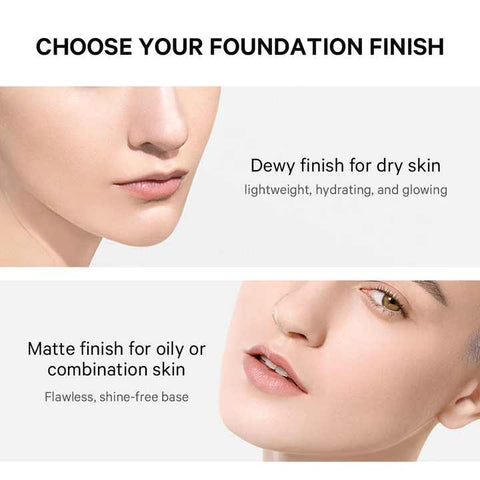Best Concealer for Neutral Undertone: How to Find a Shade for Your Skin Tone
Have you ever wondered what’s the best concealer for neutral undertone? It might be difficult to find a concealer color that complements your skin tone. Nobody is aware of their skin's undertone or how to determine it. However, you can cover practically anything with concealer if you have the proper shade.
One of the most important items in any makeup bag is concealer. The key is to get one that closely resembles your skin tone. Some people require different concealer types and colors. There are concealers for covering defects, brightening shades, and color correction.
We'll talk about how to pick the best concealer for your skin tone. Additionally, you will discover a few hints and techniques for using it to cover anything.
What Is an Undertone?
You must be aware of your skin's undertone in order to choose the best concealer for neutral undertone. The hue within the color of your skin is the undertone. Your surface shade is where your undertone is located.
There are cool, warm, and neutral undertones as the main three. Pink and bluish undertones can be seen in people with cool undertones. Warm undertones come in a variety of colors, from peach to yellow. If you have a neutral undertone, it falls somewhere in the middle and is neither cool nor warm.
When it comes to undertones, there is no one size fits. Understanding your skin tone is crucial since those with fair skin can have a warm undertone, while people with tans can have a cool undertone. It won't appear correctly if you have a warm undertone and use concealer designed for those with cool undertones.
If you're unsure which one corresponds to you, you can figure out your skin's undertone on your own. You may perform a number of tests at home. If you're still having trouble, consult a dermatologist or aesthetician for assistance in determining your undertone.
1. Examine your veins
You can check to see if your veins have any recognizable colors by looking at them. You might have warm undertones if you see green tones. If your veins seem purple or blue, you have a cold undertone. If you can't see your veins because they seem to match your skin tone, you might have neutral undertones.
2. Look at your hair color
When attempting to determine your undertone, take into account your natural hair color. You might have cool or neutral undertones if you have blonde or lighter-colored hair. People with darker hair, on the other hand, typically have warm undertones. Although these aren't absolute laws, they can be useful.
3. How the sun affects your skin
How does sun exposure affect your skin's reaction? When it comes to undertones, how the sun affects your skin can be highly revealing. The majority of cool undertone people become sunburned. People with warm undertones, meanwhile, tan and resist burning.
Selecting The Right Shade of Concealer
1. Identify the area you want to conceal
Knowing the region you want to neutralize is the first step in selecting the proper concealer color. Then, choose a concealer with a base color that is complementary to or opposite from the color of the target area on the color wheel. For instance, since dark circles are typically purplish or bluish, you should lighten the region with a concealer with a yellow or orange foundation.
According to the color theory, two hues that are opposite one another on the color wheel cancel out one another when used to correct color. For example, orange is the opposite of blue, yellow is the opposite of purple, and red is the opposite of green.
2. Know your skin tone and undertone
Your skin's surface hue is referred to as your skin tone. It falls into one of four categories: fair, light, medium, or dark. The undertone, meanwhile, is a subdued color that lies beneath the surface of your skin. It might be chilly, warm, or neutral. It's crucial to get both perfect for a seamless blend.
In general, if you want to seem bright and alert, you should choose a concealer that is half a shade lighter than your foundation. For instance, a yellow-based concealer would be ideal if you have a light to medium skin tone. A concealer with a red or orange undertone will work if you have a medium to dark skin tone, though.
Concealers with undertones like rose, cocoa, porcelain, and sable blend best with a cool undertone. Conversely, a warm undertone works well with concealers that have a beige, chestnut, golden, caramel, or tan basis. So, the best concealer for neutral undertone must fit in with yellow and blue hues.
3. Make sure to color correctly
The color wheel's complimentary or opposite pairs of hues cancel each other out, giving your face a toned and perfect appearance. Typically, a golden or yellow corrector is best for covering up the olive, sallow, and brown spots on the face, while a pink or peach corrector works wonderfully for covering up purple, blue, or red blemishes.





















